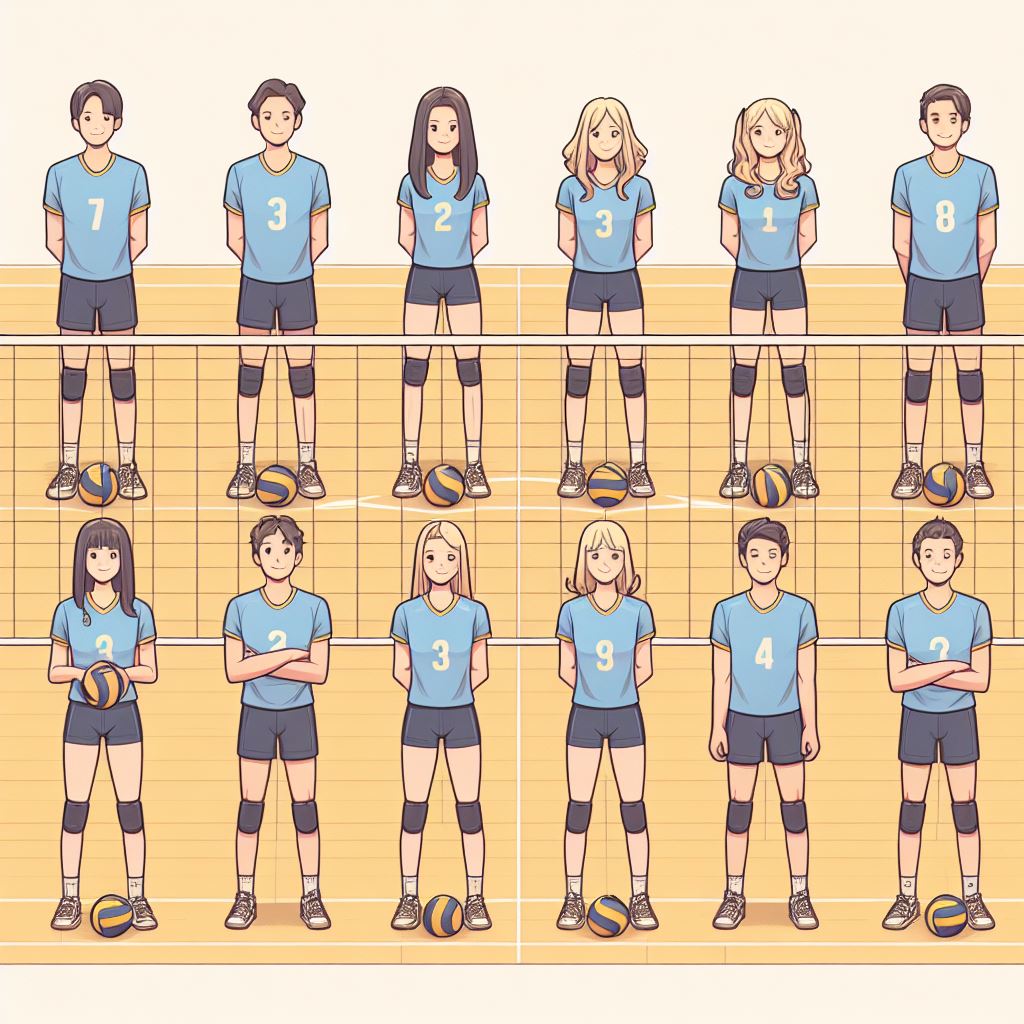These back-to-back holidays are really getting to me…I haven’t played volleyball for three weeks and I’m going a little stir-crazy. That said, I have lots to discuss in regards to positioning and how players have to keep themselves on the court. Basically, as you’ll see in the video below, an important rule of organized volleyball is that each player has to be in the correct position before the ball is served. By that, it means that a player in the back row cannot be further up the court than a front row player. Likewise, a player cannot be on the wrong side of the player before or after them in their respective positions. This is much more important in organized games, with jersey numbers and prescribed positions as opposed to Intramurals like I play, where it’s a more of a free-for-all. Still, it is important for your own team to know positioning so that you don’t get confused as to who serves after who. The cohesiveness of a volleyball team hinges on how well they know their positions. Also, it should be said, there are different systems in which a coach can position their teams.
For instance, the example I use is called a 5-1 (pronounced five-one). This means there is only one setter who sets the entire game, regardless if they are in the front or back row. This complicates things slightly as the setter has to be aware of where they are in their starting position and when they are in the front or the back. As an example, if the setter starts in the back row, they are not allowed to “attack,” or hit the ball when they move up to the net to set the ball. Ideally, the setter isn’t the one attacking the ball in the front row but sometimes, the first pass is off the mark and the setter has no choice but to attack, rather than attempt a set. Another slight problem with this system is that there are times when the setter is in the front row and that means there are only two other players in the front row who are allowed to hit the ball in front of the 3-metre attack line. What this means is that the setter options are more limited, and their offence is going to be more predictable, leading the opposing team to more easily block the attack, or be in better positions to defend the attack from the opposing back row.
Another system that can alleviate this problem is called a 6-2 (six-two) position. This means there are two setters on the court at all times, but they only set when they are positioned in the back row. This always allows for three attackers in the front row: one power, one middle, and one offside (who is also the other setter, just when they are positioned in the front row). This allows for a staunch offensive attack, with attacks coming from three distinct hitters. The trade-off is that there are only two players in the back row who are focussed on defence, so there are gaps in the back row that can be exploited.
Another system that is better for beginners might be the 4-2 system (four-two…I think you get the pronunciation). This is similar to the 6-2 where there are two setters on the court at all times but the distinction is that the setters will exclusively set from the front row. This improves the chances of defensive plays with having three players ready for defence in the back row, but negatively impacts the offence, with the setter only having two attackers to choose to set to in the front row. A way around this is for the setter to set players for attacks in the back row, but this carries a substantial risk because the back-row attackers have to make sure they jump before the attack line, or they will be called for a violation. As well, hitting from the back row is difficult, and it’s easy to put too much power into the hit and have it go too long and out of bounds.
Anyway, I hope you enjoyed my crash course on how volleyball teams arrange themselves. Three basic systems to consider, each with positives and negatives. The video below explains how players have to position themselves on the court before the serve occurs to avoid a positional violation. It is in the example of a 5-1 system.
Practice Safe Sets is back to the court this week: game recaps coming soon!

selenabrar
October 17, 2023 — 2:02 pm
Aw man, its too bad you haven’t had a chance to play in so long! I’m impressed by your depth and breadth of reflection on the different volleyball plays though. You’re going to be so ready for when you can get back in the game! Can’t wait to hear how it goes 🙂